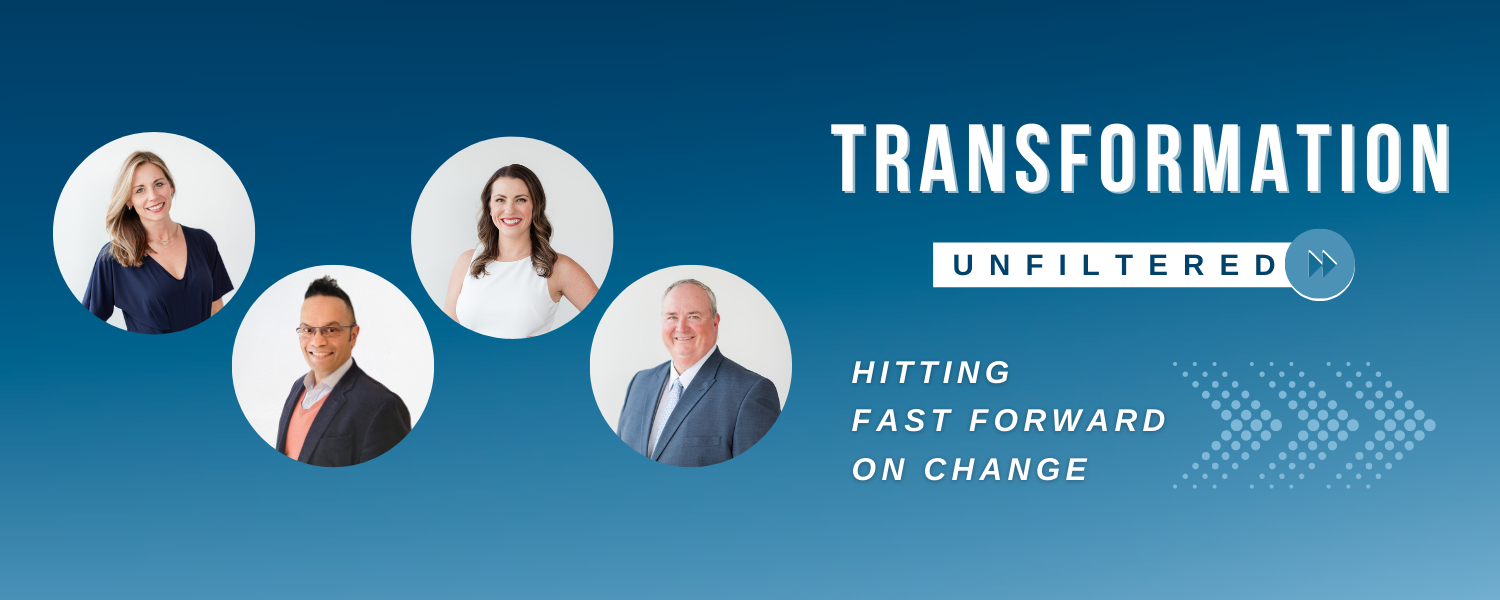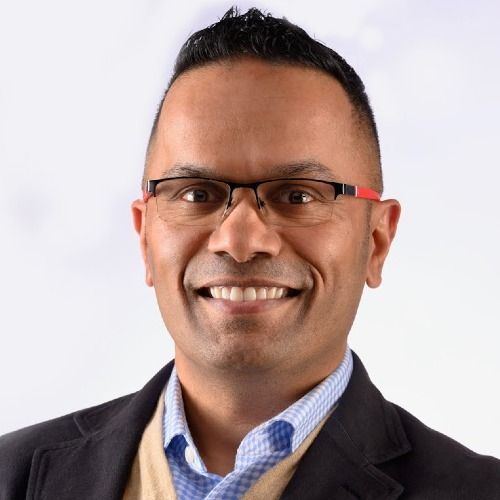Episode 22
How Silence Sabotaged Our Success
Summary:
Craig Beavers, COO of Axela Group and former fire and rescue battalion chief, joins Dr. Jim to discuss navigating organizational transformation. Reflecting on past leadership missteps, Craig highlights the importance of communication, employee buy-in, and strategic planning in change management. He emphasizes the need for robust training and creating a leadership presence to ensure successful initiatives. This episode offers valuable lessons on overcoming blind spots and building organizational playbooks to guide leaders through effective change processes. Tune in to gain insights from Craig’s extensive experience in public service and leadership.
Chapters:
0:00
Lessons in Leadership and Communication from Craig Beavers
3:51
Challenges in Fire Department Operational Overhaul
8:55
The Importance of Communication and Buy-In in Organizational Change
Improving Leadership Through Training and Development in Organizations
Leadership Lessons on Change Management and Organizational Success
Host Dr. Jim Kanichirayil: linkedin.com/in/drjimk
Guest Craig Beavers: linkedin.com/in/craig-beavers-49b7129
Executive Producer Jim Kanichirayil: linkedin.com/in/drjimk
Music Credit: "Lost in Dreams" by Kulakovka
Transcript
We should have done employee surveys, we should have done newsletters, we should have, going back to that communications theme again. We should have done a lot, we should have had that communication plan in place and allowed people an opportunity to be able to submit their questions and their thoughts as through an ongoing basis.
As things were moving forward. Unfortunately we thought that over-communicating may slow us down, but the opposite happened. Our silence created the delays and confusions and mistrust
Dr. Jim: The whisper campaign had started. No one knew what was going on.
n, no one really saw it that [:Don't make the mistakes that Craig made early in his career. This is gonna be your playbook for navigating transformation successfully. So what's Craig's story? Craig actually brings decades of leadership experience in public service in emergency management. He's currently the COO of Axela group and recently he retired as a fire and rescue battalion chief, and Craig had a 30 year career in the fire service crisis response and community leadership that has shaped his ability to guide organizations through complex challenges with clarity and confidence. Having served in a rapidly growing community outside of Washington, DC.
is expertise. Extends Beyond [:He helps leaders in both public and private sectors strengthen their ability to influence, motivate teams, and drive strategic change with a deep understanding of leadership under pressure, fire service management, and administration and training in neuroscience, Craig provides invaluable insights to organizations navigating uncertainty, growth and transformation.
His ability to translate lessons from public service into actionable leadership strategies makes him a key resource. Government, municipalities and business looking to enhance their leadership capacity and operational effectiveness. Craig is currently the COO of group, and I pumped to have him on the show.
Craig, welcome to the show.
Craig Beavers: Thank you, Jim. Thank you so much. You made me sound a lot better than I thought I did. So thank you for the introduction.
. There's no drinking on the [:It's not that kind of show. There's no swearing on the show. It's not that kind of show either. So you're gonna need to button it up before we get into it. Are you good?
I'll do my best. I make no promises for sure.
It's a good thing there's post-production in this and we're not doing a live stream because otherwise we might get reported for violating community guidelines. So with that being said, let's get right into it. What'd you screw up?
Craig Beavers: I would say early in my career I was tasked with leading a large C committee to reinvent our operations section. The goal overall was pretty ambiguous. It was to reduce employee fatigue, streamline processes, and make sure we get the right resources. To the right problems a little bit faster to make sure that we we continue streamlining through in the fire department through our communication center, through our operations section as, as well as through our hospital system.
verall it had impact. To the [:One of the things that caught my attention in your answer was that when this committee was put together, the goals that they had established were largely ambiguous. Give me a little bit more detail on what that actually looked like.
Craig Beavers: Our leadership realized that they needed to make a change, that one of the issues that we were experiencing is that our request for services. Was outpacing the resources that we had available internally. As you can imagine buying apparatus, hiring people and building fire stations is a very expensive endeavor.
eadership didn't know how we [:In a paramilitary organization, sometimes the orders are rather ambiguous. But you're supposed to. As a, as an executive and chief officer in the organization, trying, try to identify what the problem is, do the research, and then come up with a feasible plan to move that forward and meet the goals.
Dr. Jim: It's interesting that you describe that. It's it's not unusual for organizations like like the fire service to have ambiguous goals. That's that's surprising considering I'd imagine those organizations being fairly command and control and within the lines. That's an interesting bit of information.
One of the things that I'm curious about this is, you have an initiative that's a pretty high ticket initiative. Some of the goals are a little bit fuzzy, but let's set that aside. If you were able to pull this off on the first try, what would it have met for the organization, the people, the community give us give us some insight into that.
our residents with the right [:So oftentimes it's guiding people to the right door. Is the is the goal overall of this whole program as part of really a more of a larger integrated support system that involves not only the fire department, but also community services boards, social services area, agency on agings, and a whole bunch of non-governmental organizations, all of which is to better serve the residents in a faster, more comprehensive way.
Dr. Jim: So it's a significant impact that you would be having. So that's that, that's gonna be a big win if you can pull it off. Having said that, how did all of that go sideways when you launched this?
ginning, we really failed to [:We really needed to bring representation from multiple groups into the room.. The goal was to eventually bring them on board, but initially, as we were making, we were preparing and making plans the group was really a bunch of small high ranking executives in the fire service that was really trying to map out how this thing was going to work.
And that's where things started to go a little sideways. Mostly because we don't understand the challenges and the resources that are in some of these other organizations and where they can help and where they have challenges.
rt of executive level person [:How did you boardroom guys? I don't even know if they have boardrooms and fire stations, but whatever. let's just go with this. How did you boardroom guys who are out, out of touch with what's going on in the front lines, really miss the mark when it came to connecting the dots on how this is supposed to be pulled off? I.
Craig Beavers: I would say where things really went wrong is that we made it clear that we were, we had this program that we were looking at. We didn't really provide a lot of information and insight as to what that was going to be and what that was going to mean for people. People didn't know what was happening.
des were being drawn without [:And confusion was just rampant throughout the organization. We do these little things. We call 'em the town hall meetings. And concerns really started to get raised in those meetings. But we underestimated how severe they really were. We thought if we focused on the work, it would all sort itself out, but clearly it didn't.
Dr. Jim: You're all at town halls, you're starting to get yelled at, and typically when that happens, and we've seen it over and over again across a number of different D different sectors, one of the big things that leaders get wrong when that happens, when they get information that they don't like, they immediately get defensive and or move into CYA mode.
So is that what happened in your experience or were you able to avoid that and recalibrate?
at they tend to be the vocal [:Done and being communicated outwards. So the feedback that we were getting was from the same group of people that always are upset about something. And it got quickly dismissed, unfortunately. Where we missed the boat is that there was really an undertone there that they were just carrying forward that was much bigger than we expected.
Dr. Jim: When you look at all of that stuff that's going on, you got rumors starting to fly. You have whisper campaigns, you have this somewhat antagonistic town hall experience that's happening, and then you have the group of executives who've put this plan into motion without really hearing from the front lines.
ught you in terms of how you [:Craig Beavers: I feel like the two things that we experienced in that, the lessons that I really took away, is that you have to have a plan to communicate the work and findings of the committee. People want insight into the process, otherwise they'll fill in the blanks themselves, and it's rarely positive. So you gotta have a communications plan first and foremost.
The other thing that I would, lesson that I walked away from is that people want buy-in. If you're gonna tell them their job is going to change, they want to know how it's going to change and how it's gonna impact them. Retrospectively we should have done probably more town hall meetings.
We should have done employee surveys, we should have done newsletters, we should have, going back to that communications theme again. We should have done a lot, we should have had that communication plan in place and allowed people an opportunity to be able to submit their questions and their thoughts as through an ongoing basis.
ng may slow us down, but the [:Dr. Jim: It's interesting that you just named off like a list of things that fall in the woulda, coulda, shoulda bucket. And, high hindsight is always 2020 when it comes it comes to that sort of stuff. But when you think back to that time. Why wasn't that step taken? Why wasn't that part of your toolkit at the time?
Craig Beavers: Well, I think a couple of things. One is we really do a very poor job with training our supervisors, managers, and executives. To function in the roles that we're operating in. We are a bottom up organization. We hire people as firefighters. We train 'em to be firefighters. We run 'em through a six month academy to fight fires and provide emergency medical services, but we don't train people to do project management.
b at being a firefighter and [:We need filled for one. But where we think that they might do a very good job, but we really do a poor job. And I would say this is probably globally amongst most organizations is that we take people that do real good job technically and we make the assumption that they're gonna do a real good job higher up in the organization.
Sometimes they. The cream rises to the top. Sometimes it doesn't. But that's probably the biggest factor is that we didn't know what we didn't know at that point.
Dr. Jim: That's really good insight and I appreciate your comment about didn't know what you didn't know. I think there's a lot of organizations and people within organizations that fall in that category. What's your advice to to people in organizations so that you can smooth out those instances where you have blind spots within the organization?
Craig Beavers: I [:So you have to have a robust, training department. You have to a, allow for external networking. You have to allow for external conferences and just any opportunity that you can to con continue your personal development so you can be successful in roles, particularly as you're moving.
With within an organization.
this taught you that helped [:I.
Craig Beavers: A couple of things. I would say that I realized how much and I'm gonna use kind of air quotes here, priming the pump really matters. Taking time upfront in the preparation and planning phase to research the problem, talk with experts. And I would say this is the key, getting people ready for change.
Change is scary for a lot of people. They don't really know what that means. So you have to get people ready and. Positioned to realize that things are gonna look a little bit different in the organization moving forward. I think when folks understand what's happening and why they engage instead of resist communication, communicate well and often those alone can speed up everything in the long run.
l 'em change champions, have [:And also be agile. No plan survives first contact with reality. Even the best laid plans problems will arise. So you have to be willing to address those quickly and attentively.
Dr. Jim: I want you to put on your mentor hat right now, and I want you to talk to that person that's maybe 10, 15 years behind you in their first leadership role. And when you're talking to that person, what are the things that they should be expecting to go wrong when they sign up for that first initiative that they want to take on, and how should they get around or at least solve those problems?
Craig Beavers: I think when you have somebody in their first big leadership role, how they would apply this I would say don't be afraid to slow down at the start. Get curious, talk to people, gather insights. I. And when it's time to lead, bring people along with you. Communicate early and often and show them how change is managed.
Most folks have never [:Which means showing up consistently and building confidence and trust within the people of your organization. Leadership isn't just what you say in a memo, it's how you show up. And particularly during change. Make a point to be present, whether that was in meetings, town halls, or just walking the floor.
People notice when you're accessible. Also being a visible leader sends a message. It means I'm in it with you. People see you showing up consistently. It builds them a sense of safety, stability in the middle of a lot of uncertainty. I learned that presence equals reassurance, even if they don't have all the answers being their matters.
Dr. Jim: If people want to continue the conversation, what's the best way for them to get in touch with you?
inly reach out to me through [:Dr. Jim: Awesome stuff. So I appreciate you hanging out with us and sharing with us your story on how you screwed stuff up the first go around. So that takes a lot of guts to actually admit that you did that and and share that in open forum. When I think about this conversation that we had, the part that stands out to me the most is the need for established playbooks within any organization. You said something halfway in the conversation, you don't know what you don't know. And I think if you're looking at building a high performance organization and.
Empowering the people within your organization to hit the ground running in whatever new role that they take on. It becomes critical for you to have an established set of rules or playbooks that people can go ahead and execute. This is how we do things. This is why we do things. This is what we do. And the more you can get skilled at documenting that and having that as part of your employee development plan, the better off you're gonna be.
A lot of the mistakes. That [:And the more. Structure and framework that you establish in terms of playbooks and institutional knowledge, the better off you're gonna be in terms of putting those people in positions for success. So I appreciate you sharing that with sharing the story with us. This is what I took away from it.
For those of you who've been listening to this conversation, let us know what you took away from it and then tune in next time where we'll have another leader hanging out with us and sharing with us the insights that help them hit fast forward on their transformation initiatives.



